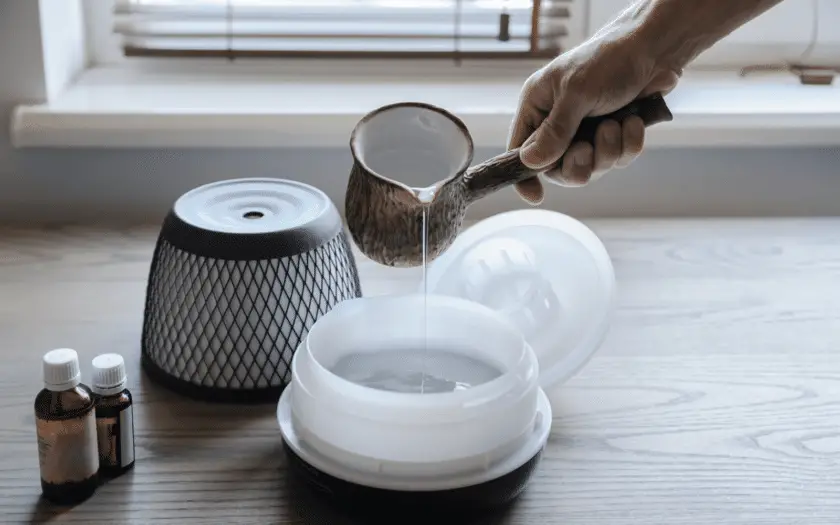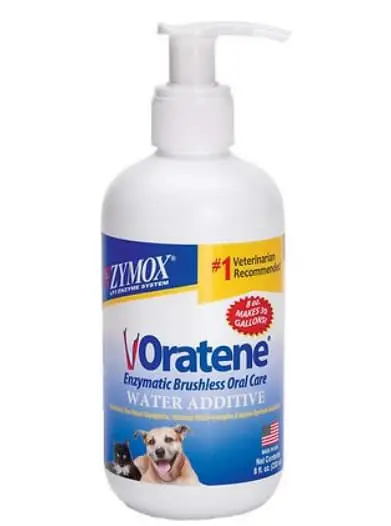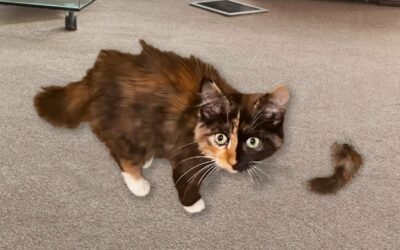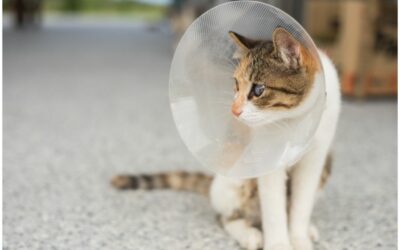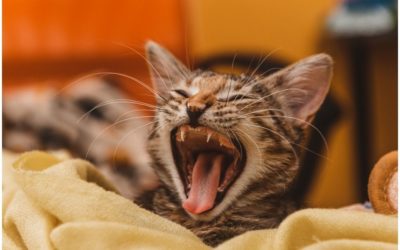Did you know that over two-thirds of all cats past the age of three have dental problems? When plaque is not removed, it can lead to all sorts of dental problems. Needless to say, tooth decay can have severe consequences when left untreated, and dental treatments can cost you hundreds of dollars!
To prevent these issues, brushing remains the most effective way of removing the bacteria that are responsible for tooth decay and cavities. But did you know there is another secret weapon that specialists recommend using to keep those pearly whites in top shape?
In this review article, we’re taking a critical look at some of the best vet-recommended water additives for healthy cat teeth.
Catpointers Recommends:
What is a water additive?
Dental water additives are sold as bottles filled with a liquid that is safe for daily consumption and should be added to your cat’s drinking bowl. Water additives are the human equivalent to mouthwash; these products contain chemicals like Xylitol or natural substances (depending on the brand and product) that are designed to fight bacteria and break down plaque on the teeth and gums.
Studies have found that water additives can reduce plaque formation up to 50% in cats. Besides the effect on teeth, there is another important benefit; drinking bowls are often riddled with bacteria. By introducing a water additive, you are effectively reducing the number of bacteria in the bowl, which also helps to keep your cat’s water fresh.
How do I use a water additive?
Each product has slightly different instructions, so be sure to check with your veterinarian for advice prior to beginning, in order to make sure that the product won’t interfere with other possible medications and/or conditions.
Usually, you will have to add a certain amount of the additive into a specified amount of water and then pour the mixture into your cat’s drinking bowl. As an example, the product might have to be mixed at a ratio of 1 teaspoon for every 30 ounces of water.
Always follow the instructions on the package to a tee, and be careful when you drop it in; water additives are highly concentrated, so you should always take great care not to exceed the amount advised on the packaging.
The secret to a healthy mouth
Keeping a pet’s gums and teeth in great shape is something most owners do not actively pursue. But as your cat ages, gum and tooth problems can start to show up that cost tremendous amounts of money to get fixed. You can prevent a lot of possible suffering and expenses by purchasing a few key items and building them into a routine:
- pet toothbrush
- plauque whipes
- water additives for cats
Your cat may initially feel resistant to getting their teeth scrubbed, but using these products in conjunction will massively decrease the number of harmful bacteria living in their mouth. You will effectively prevent gingivitis and many other oral diseases.
Brush with a pet toothbrush
Without a doubt, brushing teeth is the most effective solution to combat bacterial growth and plaque. Make sure to buy a toothbrush and toothpaste designed specifically for pets, as the human equivalent will not suffice. We can highly recommend picking up some fish-flavoured toothpaste to make the experience more pleasurable for your cat.
As for the actual brushing, most cats are major drama-queens: they will run at the first sight of anything unfamiliar. That’s why it’s important not to just jam the brush in, as that could traumatize your pet. A better approach is to slowly ease them into it while providing plenty of comfort and reassurance during unpleasant chores.
Additional reading: How to brush a cat’s teeth at home
Plaque wipes
Wipes are less invasive than a toothbrush, which makes them more likely to be accepted by anxious cats. Your vet should be able to tell you which ones will work best.
Symptoms of oral diseases
We started this article by mentioning that over two-thirds of all cats have dental problems by the time they reach the age of three. Since cats are often awfully quiet about their pain and suffering, you should be extra aware of the signs of oral disease:
- Sore & inflamed gums (deep red)
- Yellow/brown sediments on the teeth
- Halitosis (bad breath)
- Problems with chewing
- Frequent chomping
- Touching the mouth with paws
Product Reviews
1. Oxyfresh Dog & Cat Oral Hygiene Solution
If you’re looking for a product that doesn’t taste or smell terrible, this is your best bet. Oxyfresh is a well-established brand in the world of pet dental hygiene, and their experience has resulted in a super effective product that most pets can tolerate just fine. Whereas most dental waters have that super unpleasant taste of hydrogen peroxide, this formula is actually completely neutral and does an amazing job of treating halitosis (bad breath).
Tip: If you want to try Oxyfresh Oral Hygiene Solution, don’t buy the big bottle right away. Instead, order the small tester to see how your cat responds first.
Ingredients:
Water, Stabilized Chlorine Dioxide, Zinc Acetate, Sodium Citrate, Chlorophyllin-Copper Complex, Sodium Benzoate, Sodium Hydroxide, Citric Acid, Potassium Sorbate
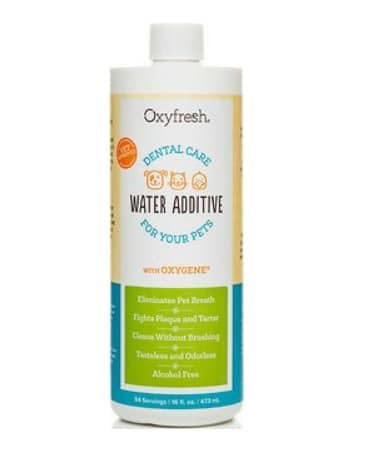
What we liked:
- Very effective against bad breath
- No odor & taste
- Alcohol-free
- Available in small tester bottle
What we didn’t like:
- Some pets may respond to sodium hydroxide
3. Dental Fresh Water Additive – Original Formula for Cats
What we liked:
- Treats bad breath at the core
- Whitens the teeth without stains
- No alcohol
- Affordable
What we didn’t like:
- Doesn’t list all the ingredients
- Chemical smell
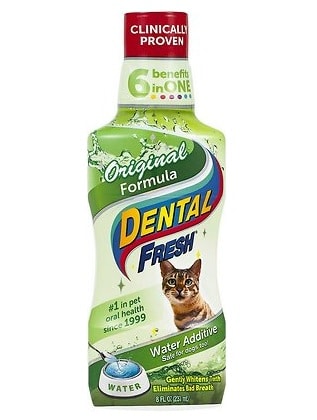
Final Words
Vet recommended water additives are a great way to boost your cat’s oral hygiene. Since most adult cats suffer from oral problems to a certain degree, adding a water additive to combat bacterial growth is another layer of defense that could potentially save you hundreds or even thousands in medical bills.

